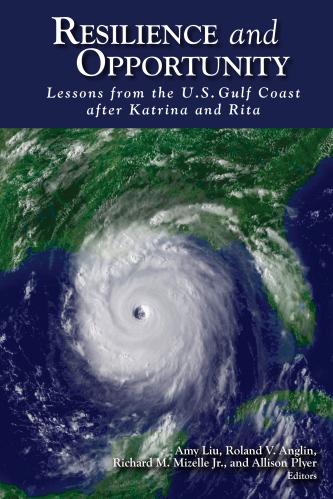Cyclone Idai that wreaked havoc on southern Africa is reminding us of the need to quickly devise sustainable solutions to confront climate and natural disaster risks. Right now, the humanitarian community and the governments of Mozambique, Malawi, and Zimbabwe are appealing for resources and emergency relief to assist over 3 million affected people.
The United Nations has classified Cyclone Idai as the worst tropical cyclone to have hit the southern Africa region in decades. The strong winds and torrential rains have put the region in a state of crisis, causing huge losses of life; flattening buildings; triggering massive floods that damaged critical infrastructure and farmlands, and submerged entire communities; leaving affected people in desperate situations without shelter, food, safe drinking water, and sanitation and hygiene.
The governments of Mozambique, Malawi, and Zimbabwe have mobilized their limited available financial, logistical, and humanitarian resources for early response in the affected areas. The international community has sent in volunteer rescue workers and humanitarian aid to support local efforts. However, governments of affected countries and United Nations agencies are still requesting additional resources to support ravaged communities.
Recently, disasters such as cyclones, droughts, and floods are increasing in both frequency and magnitude. According to U.N. International Strategy for Disaster Reduction, from 1998 to 2017, disaster-hit countries reported direct economic losses of $2.9 trillion, of which climate-related disasters accounted for $2.2 trillion. Africa is one of the most vulnerable regions to natural disasters and the impacts of climate change, despite contributing the least to global warming. Climate-induced disaster effects on the continent are particularly devastating and are mainly caused by drought, flood, and cyclones, as well as outbreaks and epidemics of diseases like Ebola, Lassa Fever, and Marburg. The economic and social burden of natural disaster and disease outbreaks was estimated at $53.19 billion in 2014.
In terms of response, the continent has been struggling to allocate part of its limited resources to disaster preparedness, due to various competing priorities in health, education, infrastructure, and other sectors. Hence, the bulk of interventions in the event of disasters comes from donors. Typically, when a disaster strikes, countries, with the help of the international community, launch humanitarian appeals and work to raise funds to respond to the crisis. Meanwhile, the people affected by the disaster are forced to make difficult decisions that deteriorate their livelihoods and reverse hard-earned development gains, forcing more people into destitution, food insecurity, chronic poverty, and, often, involuntary migration.
To change this paradigm, the African Union Heads of State established the African Risk Capacity (ARC) in 2012 to support the development of better risk management systems on the continent, while simultaneously reducing the dependence of African countries on the international community for disaster relief.
ARC brings together three critical elements of disaster risk management to create a powerful value proposition for its members and partners: early warning systems, response planning based on well-prepared and validated contingency plans, and an index-based insurance and risk pooling mechanism.
Several lessons have emerged during the institution’s first five years. The most important is that the resource gap needed to protect vulnerable populations against disasters can be reduced substantially through a combination of efforts and collaboration between governments, international aid, and the private sector. To build sustainable and country-driven responses, aid resources should support government budgets in financing innovative mechanisms, such as risk transfer, and leverage resources from the private sector through, for example, insurance and bonds.
Right now, less than two-thirds of humanitarian appeals are met and only 8 percent of actual losses are covered by international aid in 77 of the world’s poorest countries. The insurance sector covers only 3 percent of disaster-induced losses through payouts. The share of disaster insurance could be substantially increased using innovative risk transfer mechanisms that incorporate governments, international humanitarian agencies, international financial institutions, nongovernmental organizations, insurance companies, and other private sector companies operating in disaster finance. Through this type of scheme, one dollar used to pay for a premium could generate severalfold more dollars through a payout.
This model of collaboration could build a sustainable, inclusive, market-based, and more responsive system to drastically reduce the current resource gap. Moreover, the fact that $1 spent for early intervention can save over $4 in a period of six to nine months means the need for overall resources for response would reduce accordingly. Therefore, the availability of adequate resources for early intervention is a solution to explore not with new financing but with already existing resources pre-earmarked by governments and humanitarian partners.
As per current experimentation at ARC, partners such as humanitarian agencies and NGOs can participate in ARC’s disaster insurance schemes through a program called Replica. With help from the German government, these institutions can access aid resources and sign policies with ARC Ltd., the financial affiliate of the ARC group. Under this scheme, the insurance policy taken out by humanitarian partners replicates the policy signed by the government, hence increasing the coverage of the population insured. The actor and the government implement a common response plan when a disaster strikes and the index-based insurance is triggered. The advantage is the ability to provide larger resources earlier after a disaster strikes since money will be available immediately through payouts. The actor will also be able to not only intervene earlier but also provide assistance through an agreed early response plan, thus giving time for international humanitarian efforts to take action.
The combination of early warning contingency planning and index-based risk transfer and pooling is certainly, among others, a solution that can significantly contribute to the reduction of the gap in disaster protection. A solution to increase the effectiveness and efficiency of humanitarian efforts is in front of us, and all existing actors have a role to play, particularly humanitarian agencies and NGOs.
The Brookings Institution is committed to quality, independence, and impact.
We are supported by a diverse array of funders. In line with our values and policies, each Brookings publication represents the sole views of its author(s).








Commentary
Cyclone Idai exposes the gap of disaster risk relief financing in Africa
April 1, 2019